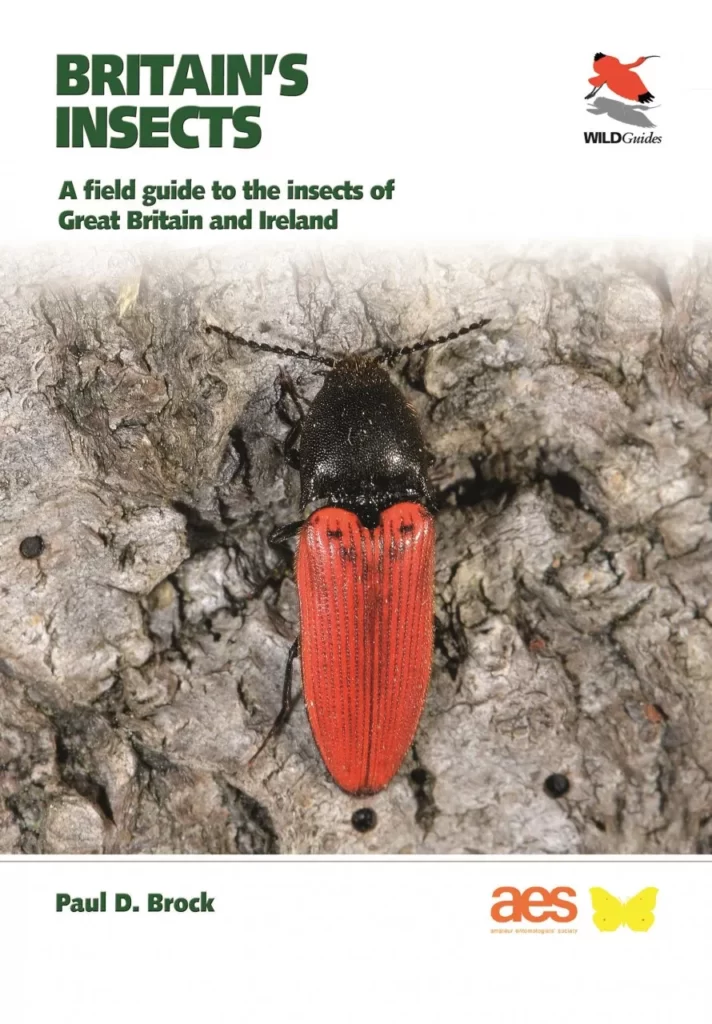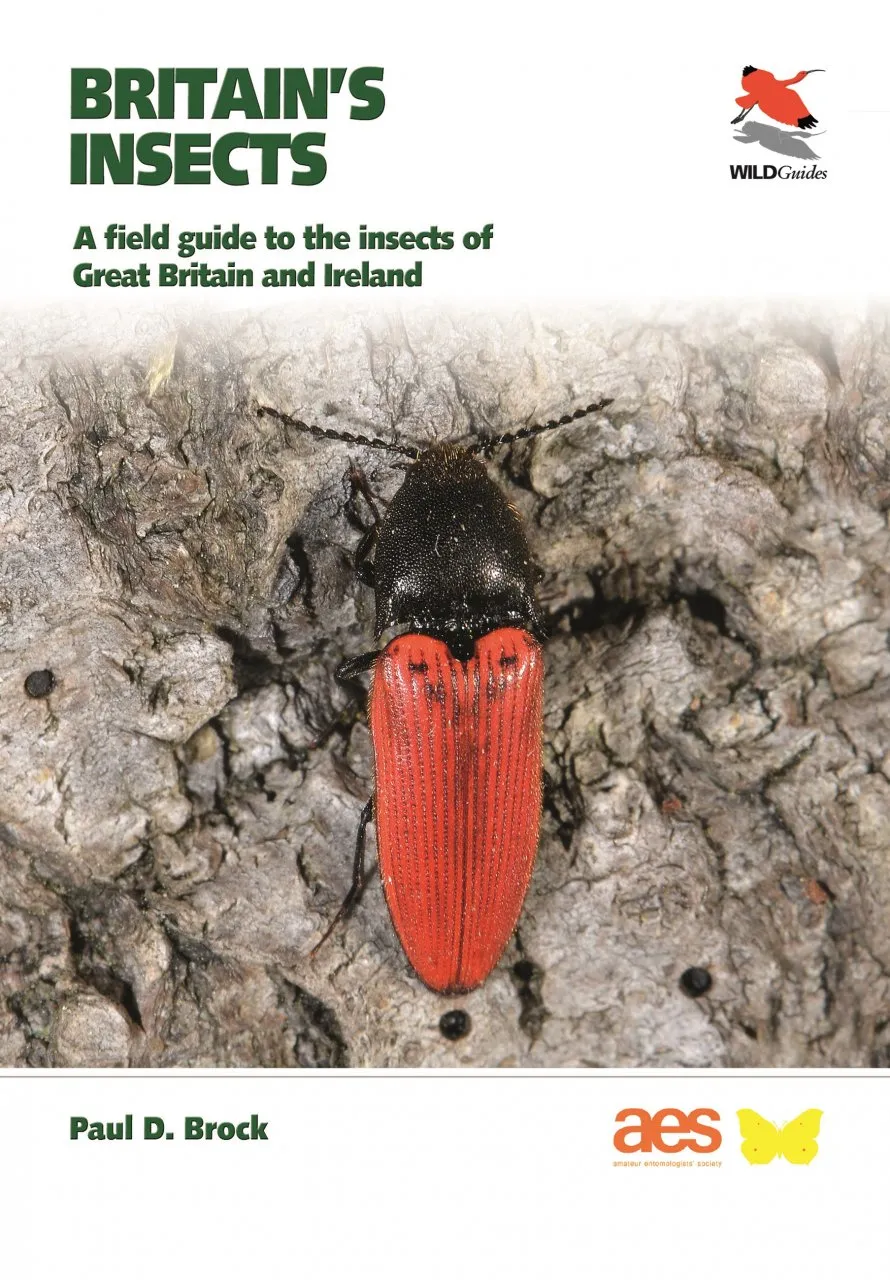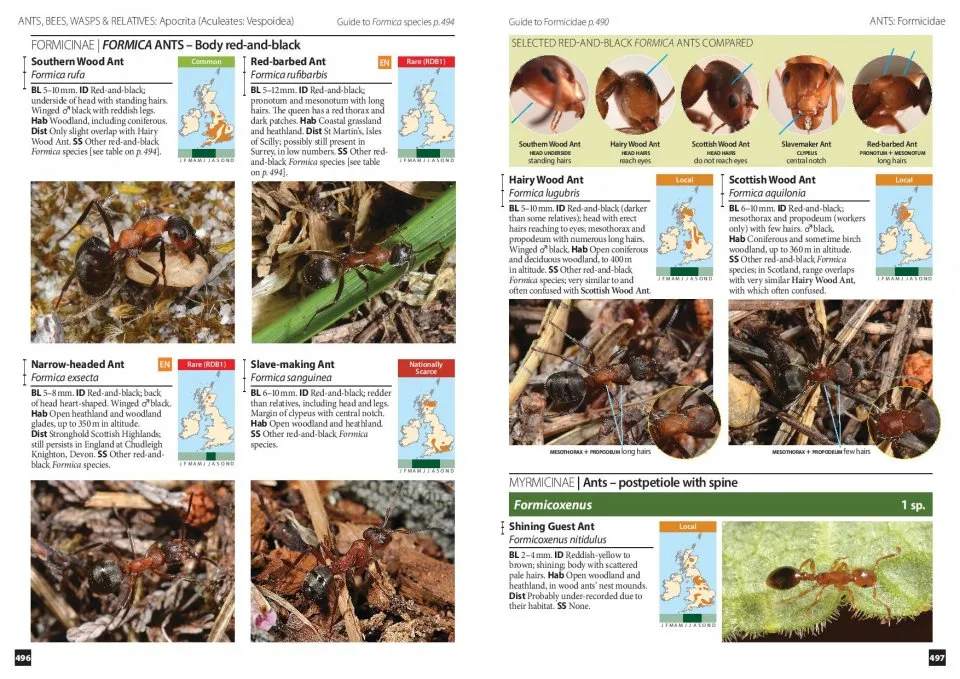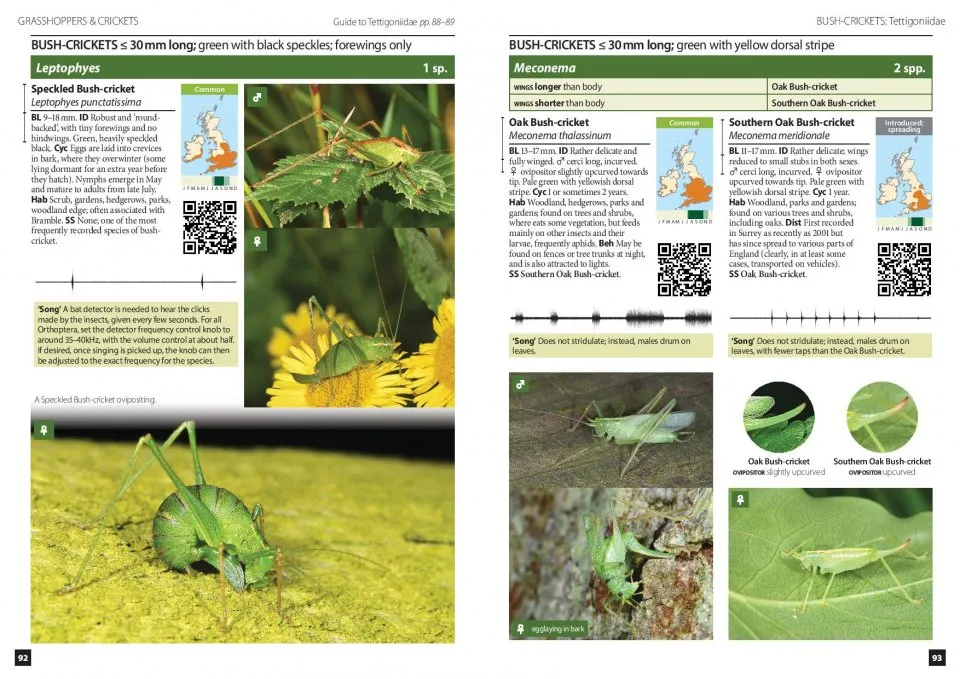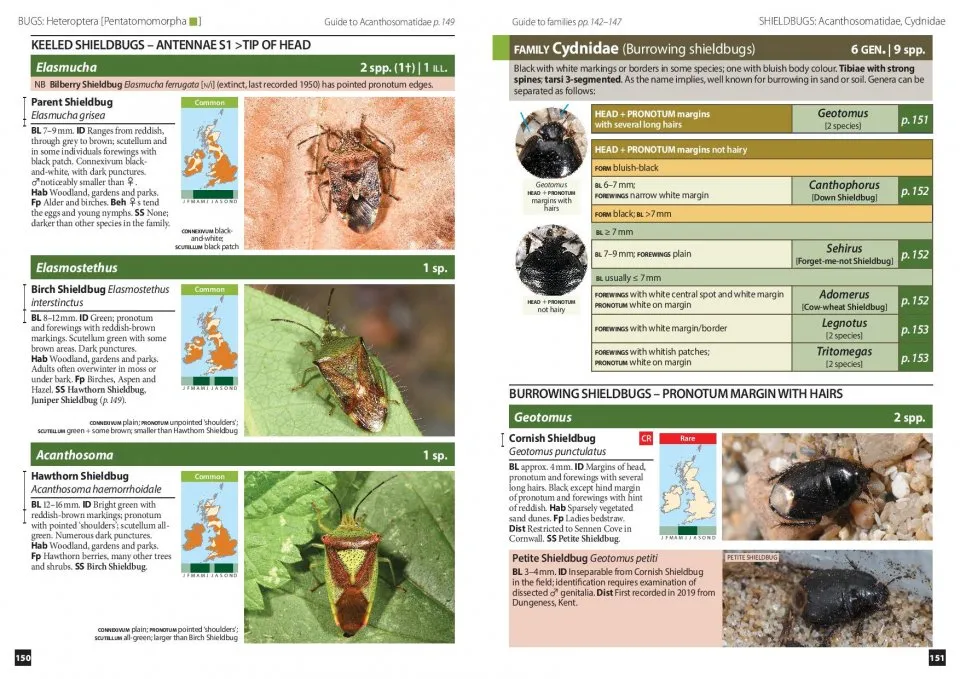I am always delighted when a good new illustrated guide to insects is published. There are about 24,000 known insect species in Britain and Ireland, and any new book is therefore likely to add something to the growing resource of available insect pictures, and give us a little more help with the difficult and complex task of insect identification. I like Paul Brock’s work, and I like WILDGuides publications, so this looked hopeful, especially with its complement of ‘more than 2600 stunning pictures’.
There is something that puzzles me, though. A few years ago, the excellent A Comprehensive Guide to Insects of Britain & Ireland, also by Paul Brock, was published by Pisces Publications, and recently re-issued as an expanded second edition. It covers largely the same range of species, with many of the same pictures and broadly similar text and maps. It seems inevitable, therefore, that you have to consider the books side by side. I spoke to both publishers about the reasons for having two similar books, and my understanding is that the WILDGuides book (the subject of this review) is intended as more than a basic photographic field guide thanks to its more layered and complex approach, through which it seeks to guide the reader towards an approximate identification by using illustrated keys and sub-division of the larger orders. In contrast, the Pisces book is an unashamed photographic guide, which you use by looking through the photographs in whatever group you believe your specimen to belong to, widening your search as necessary.
View this book on the NHBS website
The two books share the attributes of accurate and interesting species entries (albeit sparse) and excellent and generally clear photographs. Both are extremely good. So, what are the differences? The Pisces book covers 2,250 species in 2,900 photographs, weighs 883g, and has an RRP of £28.95 (although it can often be picked up for considerably less than that). The WILDGuides book covers 1,653 species in 2,600 photographs, weighs 1,514g, and has an RRP of £25. So, the Pisces book has some obvious advantages, and consequently we need to understand what the WILDGuides one has to offer within its greater bulk.
Its structured approach offers a general illustrated guide to insect orders (such as mayflies, or dragonflies and damselflies), including some larvae. Then, when you reach an order, there is a good introduction and the species accounts are further broken down into sections such as ‘mayflies with 2 tails/hindwings small or absent’, ‘Mayflies with 2 tails/hindwings large’, ‘Mayflies with 3 tails’, etc. I like the way in which the number of species in each family or genus is clearly noted (the Pisces book has something similar), which at least gives you some idea of the certainty of your identification. The approach works well for some groups, but less well for others – e.g. micro-moths, where you would, I think, be very hard pressed to establish the family of a specimen by using the key.
Most people when using this book are likely to be either looking at the insect in the field or trying to identify something from one or more photographs. In the field, if you have no idea what sort of insect you are looking at, the tiered approach will probably be too cumbersome, although it could certainly help if you know roughly where to start. Photographs allow more time, of course, but have the inherent problem that they may not show the key features you need. Even something as simple as ‘one pair of wings or two’ can be remarkably difficult to see in a photograph when you are trying to see if it is a fly or a bee, and one is often left floundering.
So, where does all this leave us? If there was only one of the Brock insect guides available, I would buy it like a shot, as both are excellent. With the current choice, I would buy both if I could afford to. If not, I think that the greater number of species photographs, the simpler layout, and the much lighter weight and smaller size (thus making it easier to carry with you in the field) would push me inevitably towards the Pisces book.
